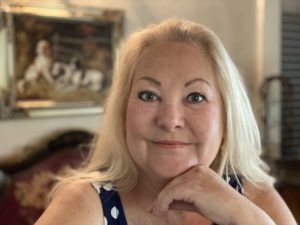Technology for Independence
| Technology for Independence This multilevel seniors community has found telemedicine useful for home care, assisted living, and nursing home care BY SALLY HUSTON |
| As a multisite provider of CCRCs, Ohio Presbyterian Retirement Services (OPRS) has seen how the continuum has changed over the past 10 years. In the past, our residents have moved through our system, entering first through our independent housing apartments or villas. As their health failed, they might have moved to assisted living, then eventually to the skilled healthcare center. Residents were required to move to a site of care that provided the type of service they needed and, most often, the changes in site of care were permanent, with little movement back and forth. |
| The situation has changed drastically. At OPRS, we talk every day about how the type of service does not equate to the site of care. Services are now portable-patients can get an IV or other therapy in their homes, in assisted living, or in the nursing facility. We are limited only by the qualifications of our staff, regulations, and available beds. Moreover, residents now have a voice in the choice of service location. As an organization, we always have been interested in moving forward. We seek out what is new and what might help us improve quality of care and the quality of life for our clients/residents. So when Senior Independence, the home- and community-based services division of OPRS, decided in 2002 to start a telehealth program, we wanted to be sure this service would also be “portable” and be available to people regardless of where they live. We began by implementing telehealth with our home healthcare clients, but we now see many opportunities to transfer this technology to assisted living and the nursing home. Telehealth: How It Works Telehealth video patient stations (our eventual choice) are located in the home and come with standard attachments: a blood pressure cuff clients put on themselves and a stethoscope they place on their bodies when instructed to do so. Also, as needed, we add a scale, glucometer, pulse oximeter, and an attachment to measure the protime level for managing warfarin therapy. A digital camera is placed on top of the unit but can be moved to focus on any location. The unit includes a magnification lens that allows the telehealth nurse to see fine print or even the markings on a syringe. We are also able to take digital pictures of skin conditions. Monitoring stations with no video are less expensive, and require patients or caregivers to complete certain tests on their own and enter the information into the monitoring unit. Patients are prompted to answer a series of questions to see how they are doing. At specific times, the telehealth nurse reviews these results at a secure Web site. The nurse will quickly recognize any abnormal results and call the patient and/or physician for follow-up. To start a telehealth program like ours, you need access to a provider station. This is a computer with special software and hardware to enable video visits. Client records are maintained on a server, permitting secure Web-based access to qualified individuals. Patient stations can be purchased or leased. Although we use only video units, many organizations have a mixture of both video and nonvideo monitoring stations. The unit plugs into an electrical outlet and a regular telephone line. We provide an adaptor that allows clients to use their regular phones for personal calls. Video units have a small screen that provides a good-quality picture. It is not television-quality-motions appear jerky, and the audio is delayed a little, because of the phone line connection. Special wiring needed for higher-quality video would have been cost-prohibitive and unnecessary for our purposes. One provider station can call any number of patient stations, limited only by the telehealth nurse’s time for visits. One visit is expected to take about 15 or 20 minutes, allowing three or four visits an hour. This is quite an improvement for home care, where travel time may allow only one visit an hour. Will Seniors Use It? |
| Expanding Into Facility Care We now have two telehealth programs-one in Cincinnati and one in Columbus, Ohio. Our Cincinnati office has been using the telehealth units for in-home care, supplementing Medicare visits from our home care nurses. In collaboration with the patient’s physician, we determine a visit plan combining in-home visits and telehealth visits. Since Medicare reimburses home care on a prospective payment system, agencies are not paid more for using telehealth. Our challenge is to find the most cost-effective visit plan to provide quality care. Similar to the Medicare PPS for nursing homes, home care agencies are paid a set amount based on an acuity rating called the HHRG (Home Health Resource Group), not on the number of visits. Each HHRG payment is expected to cover costs of all nurse, therapist, and home health aide visits, as well as staff travel expenses and medical supplies needed over a 60-day period. Both nursing homes and home health-care agencies need to manage their staff numbers and costs within these prospective payments. Fortunately, we have found savings from telehealth related to nurse visit time and travel expenses. Moreover, our clients like the video units and have found them easy to use. The video unit encourages a real relationship between the telehealth nurse and the client. For example, during the typical visit, the nurse wears a headset with padded earphones to listen to the client’s heart and lung sounds. One client kidded our nurse, saying, “If you come see me, you’d better wear your earmuffs so I recognize you.” The telehealth nurse generally schedules the visits, and the client is made aware of the scheduled time. If necessary, the client can use his or her phone to call between visits and request an additional telehealth session. The nurse calls back on the video unit, completes an assessment, and follows up with the physician by phone. This process has prevented the need for higher-cost services, such as emergency room visits, hospitalizations, and physician office visits-costs saved by Medicare. Our clients report great improvement in their quality of life with this approach. Family caregivers have reported that telehealth reduces much of the stress associated with home caregiving. The wife of one of our clients was so impressed with the system that she requested a telehealth unit for a friend being discharged from a hospital. Our second telehealth program is getting started in Columbus. This project was made possible by grants from the Columbus Medical Association Foundation, the Harry C. Moores Foundation, National City Bank, and the Columbus Foundation through the Harold and Eleanor Johnson, William A. and Magdalene E. Kottke, John R. and Phoebe E. Saylor, William F. and Mary S. Powell, and Henry E. Parkinson Funds. Our focus in this program is on providing telehealth services to aging populations in senior housing. These services will vary from preventive care and education to more on-demand types of nursing care that would be provided in most assisted living centers. Meanwhile, our home health agency provides home health aide services in several congregate settings. We want to test whether we can provide a higher level of nursing than is currently available to this lower-income population short of their being admitted to a nursing home. We have provided a telehealth unit to a senior housing building that is similar to some assisted living centers; it is housed in a small private office area. We schedule visits for the most vulnerable clients and have their home health aides call us to report changes. If needed, we have the home health aide bring the client to the telehealth unit or bring the unit to the client. Collaboration with programs providing assisted living is a real option for home health agencies with telehealth provider stations. An assisted living center could purchase units and place them in individual rooms or in an office. The assisted living center could negotiate an agreement for time at the provider station at specific hours and provide its own nurse to be available to several different centers. Or the home health agency might provide the nurse coverage. There are many possible options. Imagine, though, what an assisted living nurse could do from a provider station. The nurse could make regularly scheduled and on-demand video visits, and check the Web-based reports from multiple monitoring stations from multiple sites. Each state has different nursing requirements for assisted living, and telehealth may be helpful in providing the flexibility needed to deal with them. At OPRS, we are trying out another new use of our telehealth equipment. We have placed a station at a long-term care campus that is a three-hour drive from our corporate office in Columbus. Our director of quality assurance uses the video unit to visit residents at the nursing home and assist in the development of fall risk assessments. This will save travel time, and provide a higher level of quality assurance and immediate teaching opportunities for staff. Conclusion |
| Sally Huston is clinical director for Ohio Presbyterian Retirement Services, Senior Independence program, Columbus, Ohio. For further information, phone (614) 888-7800, e-mail sally@corp.oprs.org, or visit www.seniorindependence.org. To comment on this article, please send an e-mail to huston1203@nursinghomesmagazine.com. |
I Advance Senior Care is the industry-leading source for practical, in-depth, business-building, and resident care information for owners, executives, administrators, and directors of nursing at assisted living communities, skilled nursing facilities, post-acute facilities, and continuing care retirement communities. The I Advance Senior Care editorial team and industry experts provide market analysis, strategic direction, policy commentary, clinical best-practices, business management, and technology breakthroughs.
I Advance Senior Care is part of the Institute for the Advancement of Senior Care and published by Plain-English Health Care.
Related Articles
Topics: Articles , Facility management , Technology & IT











